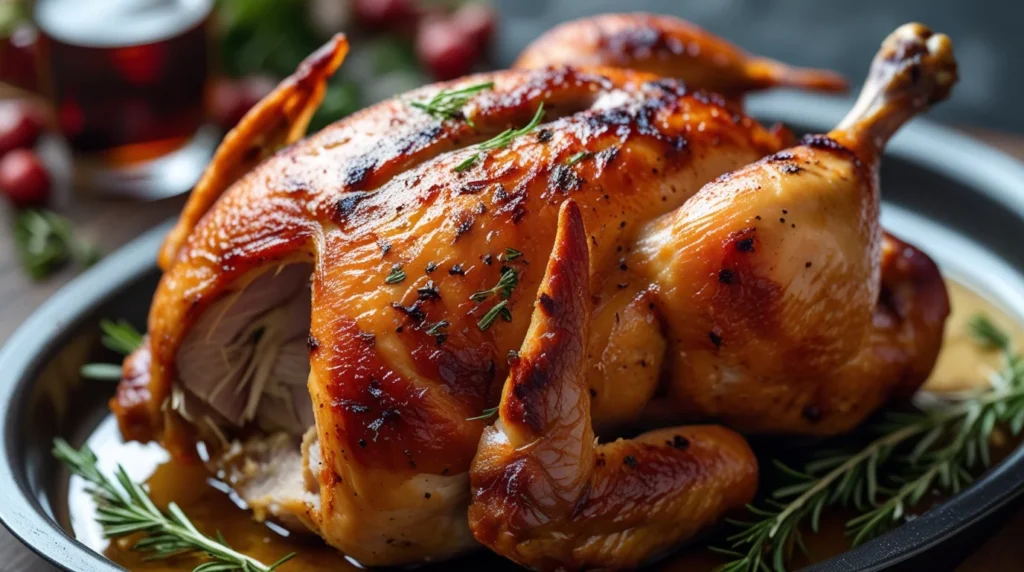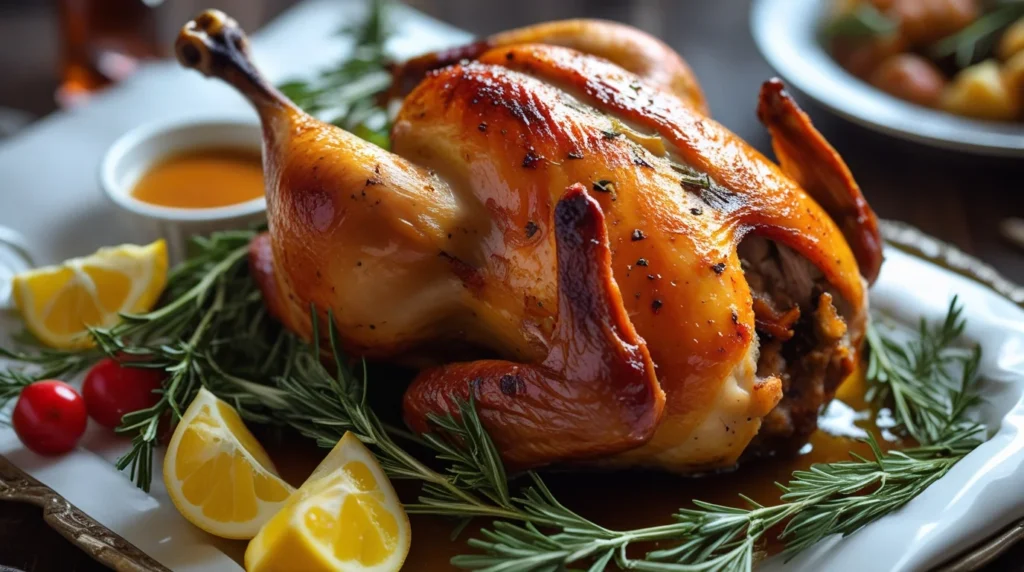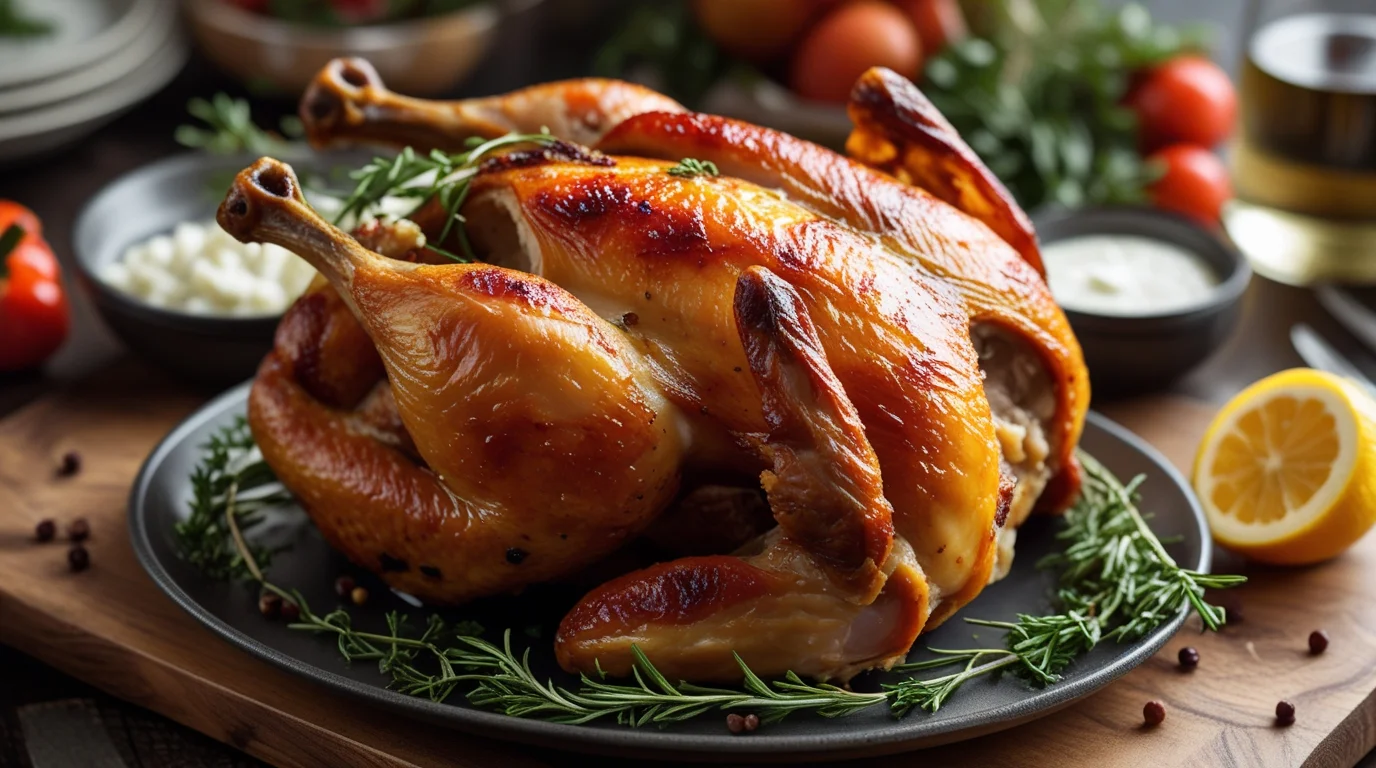Understanding Roast Chicken
Roast chicken has long been a symbol of comfort and celebration in kitchens around the world. Its origins trace back to ancient times, when roasting meat over an open flame was one of the earliest methods of cooking. Over the centuries, roast chicken became a centerpiece of family meals, feasts, and cultural traditions, from European Sunday roasts to Middle Eastern spice-infused variations. Its simplicity, combined with the ability to adapt to various flavors and techniques, has cemented roast chicken’s place in culinary history.
What makes roast chicken so beloved is its versatility. A single bird can be transformed into a hearty main dish, a comforting soup, or flavorful leftovers for sandwiches and salads. It’s equally at home on a festive holiday table as it is on a busy weeknight menu. Roast chicken’s adaptability allows it to shine in cuisines across the globe—infused with lemon and rosemary for a Mediterranean twist, coated in a soy-ginger glaze for Asian-inspired flavors, or spiced with bold Cajun seasoning for a Southern kick.
Beyond its flavor and flexibility, roast chicken symbolizes togetherness. The aroma of a roasting bird is inviting and nostalgic, making it a dish that brings people together, no matter the occasion.
This article provides everything you need to know to master the art of making the perfect roast chicken. From preparation and seasoning to cooking techniques and creative variations, every step will help you achieve a dish that’s as delicious as it is impressive. For seasoning tips and expert tricks, check out Perfect Chicken Seasoning Tips to elevate your dish.

Why the Roast Chicken Is a Timeless Favorite
The roast chicken has earned its place as a classic dish for many reasons. It’s economical, easy to prepare, and incredibly versatile. A single chicken can serve as the centerpiece of a meal, with plenty of leftovers for soups, sandwiches, or salads. Its adaptability makes it a staple in cuisines around the world, from Mediterranean-inspired dishes to classic North American flavors. For regional inspiration, explore North American Cuisine Ideas.
Essential Ingredients for the Perfect Roast Chicken
Achieving the best roast chicken starts with selecting high-quality ingredients:
The Chicken
- Choose an organic or free-range chicken for superior flavor, tenderness, and texture.
- A 4–5 lb chicken is ideal for even cooking.
Seasonings
- Kosher salt and freshly ground black pepper are essential.
- Optional spices include smoked paprika, cayenne, garlic powder, and onion powder.
Fat
- Olive oil or melted butter is necessary for crisping the skin and retaining moisture.
Aromatics
- Enhance the flavor with fresh herbs like rosemary, thyme, and parsley.
- Stuff the cavity with lemon wedges, garlic cloves, and onion halves for added aroma.
Preparing Your Chicken: The First Step to Success
Proper preparation is the key to juicy, flavorful roast chicken. Follow these steps:
1. Clean and Dry the Chicken
Rinse the chicken under cold water and pat it dry with paper towels. This step is essential to achieving crispy skin during roasting.
2. Dry Brine for Extra Flavor
- Rub the chicken generously with kosher salt and let it rest uncovered in the refrigerator for at least an hour or overnight.
- This step locks in moisture and enhances the chicken’s natural flavor.
3. Truss the Chicken
- Tie the legs together with kitchen twine to ensure even cooking.
- Trussing also helps the chicken maintain its shape for a better presentation.

Cooking Techniques for Perfect Roast Chicken
Spatchcocking: The Quick and Even Method
Spatchcocking, or butterflying, involves removing the chicken’s backbone and flattening it. This method ensures even cooking and faster roasting times. It also allows more surface area for crispy skin.
The Traditional Whole-Roast Method
For a classic look and flavor:
- Preheat Your Oven: Set the oven to 425°F.
- Season Generously: Rub the chicken with olive oil or butter, and season with salt, pepper, and optional spices.
- Use a Rack: Place the chicken breast-side up on a wire rack inside a roasting pan.
- Roast and Monitor: Roast until the thickest part of the breast reaches 150°F and the thighs reach 165°F, typically 60–75 minutes.
Low Heat vs. High Heat
- High heat (425°F): Produces crispy skin and cooks quickly.
- Low heat (325°F): Results in tender, juicy meat, ideal for larger chickens.
Tips for Consistent Results
- Use a Meat Thermometer: Ensure precise cooking by checking the chicken’s internal temperature.
- Let It Rest: Resting the chicken for 10–15 minutes after roasting allows the juices to redistribute, keeping the meat moist.
- Avoid Over-Basting: While brushing the chicken with fat before roasting is important, frequent basting can lower the oven temperature and affect crispness.
Creative Variations for Roast Chicken
While the classic roast chicken is delicious on its own, adding unique flavors can elevate the dish:
Mediterranean Style
- Rub the chicken with olive oil, garlic, oregano, and lemon zest.
- Stuff the cavity with lemon wedges and thyme for added fragrance.
Asian-Inspired
- Marinate the chicken in soy sauce, honey, garlic, and ginger for a sweet and savory twist.
- Serve with a side of steamed jasmine rice.
Spicy Cajun Rub
- Use a blend of cayenne, smoked paprika, garlic powder, and thyme for a bold flavor profile.
For Mediterranean-inspired ideas, check out Mediterranean Recipe Ideas.
Pairing Ideas and Serving Suggestions
The roast chicken pairs beautifully with a variety of sides. Here are some favorites:
- Vegetables: Roast carrots, potatoes, and Brussels sprouts alongside the chicken.
- Salads: A fresh arugula or mixed greens salad adds brightness to the meal.
- Grains: Pair with creamy polenta, quinoa, or wild rice for a hearty complement.
To elevate the dish, make a simple gravy using the pan drippings. Deglaze the pan with white wine or chicken broth, then simmer with butter and flour until thickened.
FAQs About Roast Chicken
Is it better to roast chicken at 350 or 400?
It depends on your goal. Roasting chicken at 350°F results in tender, juicy meat but may require more time to achieve crispy skin. Roasting at 400°F cooks the chicken faster and produces a beautifully browned, crisp exterior. For the best of both worlds, you can start roasting at 400°F and lower the temperature to 350°F midway through.
What is the roasting time for a chicken?
The roasting time depends on the size of the bird:
- For a 4–5 lb chicken, roast at 400°F for 60–75 minutes.
- At 350°F, the same bird may take 90–120 minutes.
Always use a thermometer to ensure the breast reaches 150°F and the thighs 165°F.
Should I roast my chicken covered or uncovered?
It’s best to roast chicken uncovered to allow the skin to crisp up and brown evenly. Covering the chicken traps steam, which can result in a less crispy exterior. If the skin browns too quickly, you can tent it loosely with foil toward the end of cooking.
How long to cook chicken in the oven at 350 degrees?
At 350°F, cook a whole chicken for approximately:
- 20–25 minutes per pound for a total of 90–120 minutes for a 4–5 lb bird.
Use a thermometer to check doneness rather than relying solely on time.
How long to cook chicken at 400 in the oven?
At 400°F, roast a whole chicken for:
- 15–20 minutes per pound.
A 4–5 lb chicken will typically take 60–75 minutes. Ensure the internal temperature reaches 150°F in the breast and 165°F in the thighs.
When to cook at 350 vs 400?
- 350°F: Use for larger birds or when you want moist, evenly cooked meat without over-browning.
- 400°F: Ideal for achieving crispy skin and quicker cooking times, perfect for smaller birds or when presentation is a priority.
Choosing the temperature depends on your desired outcome and the size of the chicken. For a balance of crisp skin and juicy meat, consider starting at 400°F and lowering to 350°F halfway through.
Conclusion
Cooking the perfect roast chicken is an art that combines simplicity, technique, and creativity. By focusing on key steps—like selecting a high-quality chicken, dry-brining to lock in flavor and moisture, and monitoring the internal temperature—you can ensure juicy meat and crispy, golden skin every time. Techniques like spatchcocking offer faster cooking and even browning, while the traditional whole-roast method delivers the classic presentation that never fails to impress.
One of the greatest joys of roast chicken is its versatility. You can stick to a classic approach with salt, pepper, and herbs, or explore exciting variations like Mediterranean-style with lemon and garlic, an Asian-inspired soy glaze, or a bold Cajun rub. These adaptations allow you to tailor the dish to your preferences and surprise your guests with new flavors.
Beyond its culinary appeal, roast chicken brings comfort and togetherness to the home. The leftovers are just as versatile—transform them into a warming bowl of chicken noodle soup or a hearty BLT sandwich. Roast chicken also pairs beautifully with sides like classic fluffy pancakes for a delightful brunch.
By embracing its simplicity and experimenting with its endless possibilities, you can create a dish that’s both satisfying and timeless. Enjoy the journey and savor every bite!

